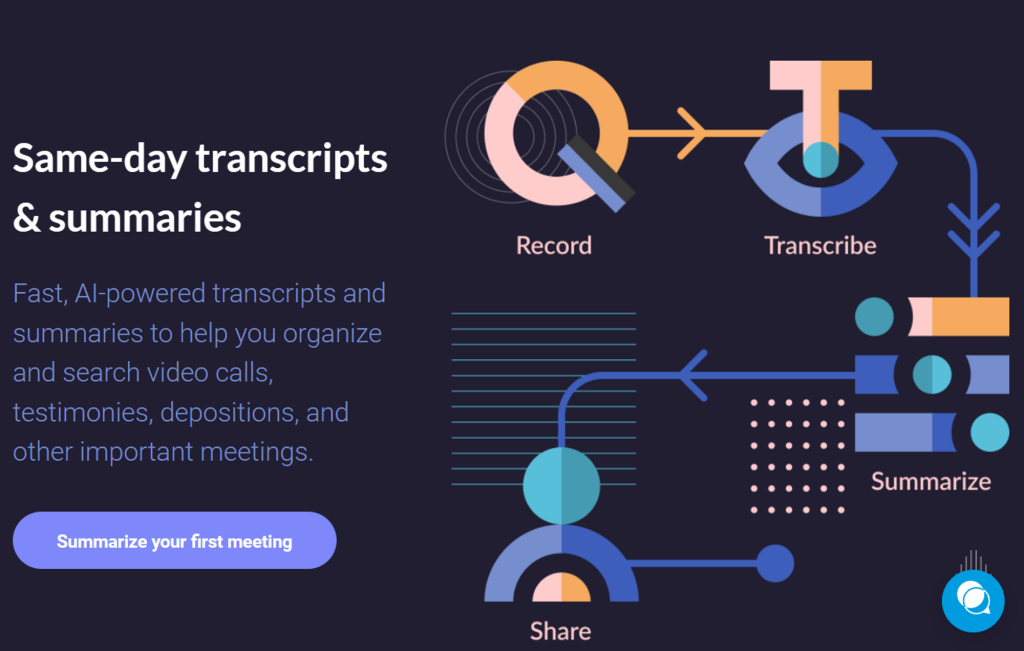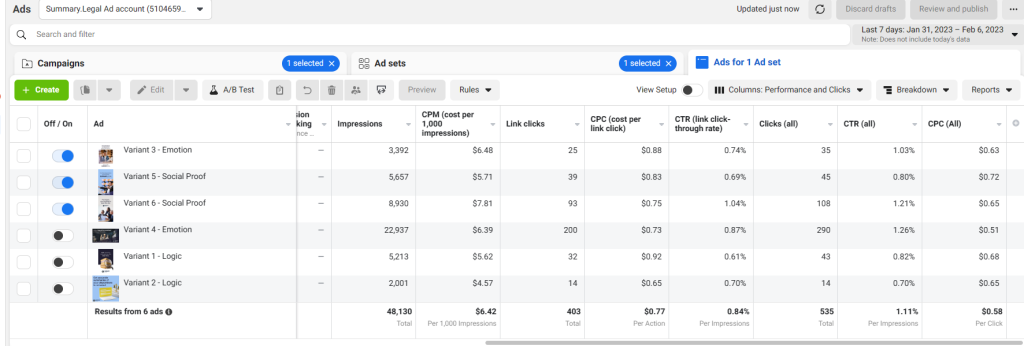💡 I’ve seen plenty of great founders build and launch micro startups as a way to try many different ideas and see what sticks. I’m not a builder, though: I’m a marketer. So I had an absolutely insane idea to start off 2023.
I’m not going to build 3 startups in Q1 and launch them all. Instead: launch the same startup. 4 times.
The exact same core functions. The same software stack and same launch tactics. Just different verticals.
This series of blog posts is where I detail the launch and the results of each of these 4 startups.
What’s New This Week
- Summary.legal idea & launch
- The first ad campaign launched for Summary.legal & results!
- Second ad campaign for summary.legal discussion
- Classnotes.tech launch
Summary.legal core idea and launch preparation
The first product we’re launching for our Grow to Market experiments is Summary.legal. The ideas behind it were pretty simple:
- LegalTech is a large industry—about 26 billion USD—and it has a lot of slow-moving tech incumbents. As we prep and launch this tool, we have a certain amount of safety because the market makers are all quite old-fashioned.
- Lawyers are also not super tech-forward. A good UX that simplifies the problems of using ChatGPT will be more than worth what we plan to charge.
- Legal teams need to process huge quantities of depositions and testimonials. While summary.legal is not a substitute for a stenographer-produced transcript (because it is not legally admissible), it is a great indexing and onboarding tool. Summaries and searchable transcripts make processing huge backlogs of recorded info much easier.
With that in mind, I pulled together the website, writing the copy as I went and grabbing assets from getillustrations.com for the graphics.

Shipped in basically one evening, it’s built on Softr because
- That’s a really easy front end for creating simple websites
- It integrates really nicely with all the no-code tools that Xray.tech is using to build the product.
With that built, I researched who we might be able to sell this to and what offers may entice them to buy. I broke it down to 3 likely audiences.
- Paralegals, legal secretaries, etc.
- Litigation attorneys who spend a lot of time on trials
- Corporate in-house counsel at larger orgs.
With that in mind and armed with a landing page, We were ready to launch.
Normally, I’d say to launch before you have a product—that’s half of the point of the book I wrote Validate First—but in this case, it’s worth talking a bit about why I partnered up with Tom and Xray.
About Xray & launching at “psycho speed”
The founder who is biased to action is the one more likely to succeed, and I’ve never met a team more biased to moving fast and trying stuff out than Tom & Mark at Xray.
Indeed, the core of this entire series of experiments comes to be by way of them. Over the week after New Year’s Day, Tom & Mark took a weekend and hacked together about 80% of the product that is powering all of these pieces.
When Tom asked me for help figuring out the go-to-market for this product, we developed a list of likely niches and then didn’t know how to pick the best one.
So we decided to launch them all.
I wouldn’t normally recommend that you build and launch 4 different products in 1 month. Heck, I wouldn’t recommend you even do 1 if you haven’t proven market need first.
But the team at Xray.tech builds a crazy speed. Talking to someone this week about it, they mentioned that they were building products at faster than crazy speed—it was psycho speed.
And I suppose when you look at it, yeah. They built a product in 1 week and we launched it the following.
The 3 main competitors I see for this product all took 6 – 12 months to get the same feature set that Xray built in 1 week.
So generally speaking you should validate first before you build.
But if you build this fast, I suppose it’s fine to build first. 😛
Launching Summary.legal
With a few small posts on social media and a rather modest Facebook campaign, we were live.
I’ll get to the Facebook campaign in a moment because it has plenty of interesting info, but there’s also something interesting and worrying about another part of the launch: between Tom’s network and mine, we had about a dozen lawyers we could just ask to check out the website and tell us what they thought before we paid 1 cent for audience tests on Facebook.
The replies were universal—cool idea, great design, the pricing makes sense, I can really see the potential.
That’s awful. When I heard that, I knew we were in trouble with this launch.
Do you see the problem here? No one said, “How do I pay?” No one signed up for a trial. No one told one of their friends who then checked us out.
That’s potentially a death knell.
You’ve maybe heard replies like I did to your product. If the sentence after, “Looks great. Pricing is reasonable” isn’t “How can I get this for myself?”, realize that the person who’s looking your product over is being polite because they don’t want to hurt your feelings.
But you’re not telling them the right story, and you’re not gonna make any money.
So I heard that early feedback on Wednesday and Thursday and Friday morning before the launch. It was all grim.
And then I launched an ad campaign for the site anyway.
Why?
2 reasons. One, when you have all of the right materials in place, launch. Don’t wait for the perfect moment or you’ll never do it. Two, everything I really want to learn isn’t happening on this landing page anyway.
When you’re following the Validate First playbook, you’re measuring the top of your funnel first and foremost, the impressions and clicks on the landing page. Even if your landing page is bad—and I suspect that this one is—you need to learn what’s happening at the top of your funnel before you know what to fix yet.
The Facebook Ad Campaign
So we ran a pretty standard 6-way split test.

The targeting wasn’t all that advanced either:

The random Arabic text is, I believe “Commercial Law” but I dunno why it’s rendered in a foreign language. In any case, you get the idea.
What we need to learn, and what we did learn
There are some “pass/ fail” metrics I look for as we start on our way through a GTM campaign.

It starts with “Are we measuring things correctly” with ER1 and then we’re trying to find an audience and a message that gets at least a 1% CTR.
So with this broad targeting and our 6-way ad split, what’d we learn?
That said, my numbers for the first round of experiments there aren’t all that different than what I usually see, and maybe a bit better than usual for a first attempt with a new product.

It’s impressive what you can learn for just a few hundred dollars.
But what does this data mean?
A few things:
This is the ad unit that got the best CTR. That’s not too surprising to me, given that we have a fair bit of paralegals in the ad targeting.

Here’s the 2nd best performer. That speaks to more than just paralegals.

So emotional appeals (and thinking of the poor benighted paralegals) actually does pretty well here.
The next thing to check out here in your individual ads is the Facebook demographic information. For example, looking at the reporting for my ads I can quickly note:
Women saw a lot more of the ads. You can see in the upper right corner of this chart from Facebook that we’re looking at impressions, and women ended up being 64% of them.

But men are more likely to click the ads. You can see here–again in the upper right corner–that now we’re looking at results for this ad unit. That’s clicks, in this case. You can see that 44% of the clicks came from men even though they were only 35% of the impressions.

So more women saw the ads than men, but men were more likely to click.
That’s an observation. What can we conclude from it?
There are two other relevant facts that might help explain some of this:

Which is that most paralegals are women, but most lawyers are men.

By targeting paralegals in my ads, I may have been harming my own CTR because the women paralegals aren’t interested in a tool like this one. It comes off as more “this is taking my job” than “this makes my job easier”.
This kind of demographic info on your ad campaigns’ performance is invaluable when you’re trying to figure out who’s engaging with your ads and why they may be performing better or worse than you’d expected.
You can investigate this info in your own ads by clicking on “View Charts” on any ad listing and then scrolling down.

With this, I have enough info to make a clear experiment 1a—the next step on the rollout.
Summary.legal Week 2 launch
- Advertise into 3 segments
- Litigation attorneys
- Paralegals/legal secretaries
- Retained counsel at larger orgs
- Create 2 ad units
- 1 role-specific
- 1 that identifies the common pain that this job role feels about keeping on top of transcripts
And armed with that, I have a much better chance of figuring out an ad unit that will actually drive interested and relevant visitors to summary.legal. Armed with that knowledge we will then be ready to actually try and create a landing page that delivers signups reliably. Some examples:
Classnotes.tech ready to launch
Later today, on our scheduled live stream, we will be launching Classnotes.tech, the next product in the same vein. The idea behind it is to go the opposite approach from Summary.legal : rather than looking for an ideal of 1k users at ~$180 each, we want to try and get 100k users at $5 each.
There are already similar tools to Classnotes.tech, particularly Tactiq, which has both validated the idea of class notes as a proven and scalable market, but the fact that Tactiq is no longer positioned as a student-first notes platform tells me that their investors or the market indicated to them that there simply wasn’t enough opportunity there.
On the other hand, this is a bootstrapped side project for both me and Tom at Xray. If it reliably makes $10k a month over the cost of operating it, we’ll take that as a big win. The needed Service-Obtainable Market here is pretty small. 😛
Here’s what we’re going with for the launch ads:

Obviously also testing different platforms, notably heavily on Insta and on Tiktok to see if we can’t get decent CTR & interest.
Note that the landing pages for both Sumary.legal and ClassNotes still both feel very much like quickly-launched products with little behind the landing page. That happens to be less true than it seems, in fact, and we will probably roll out some animated GIFs showing actual in-app functions soon.
We’re driving here for learning rather than strict performance. What can we learn? How quickly?
Actual ROAS may be low here, but the ROI should be incredible. The speed we’re moving at to launch and learn and launch again is faster than I think we’ve moved before, and it’s quite exciting to see what we will learn in the next few weeks to come.





